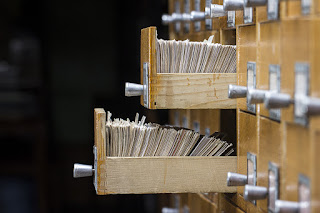Library Future?

image from http://thecontentwrangler.com/2013/09/06/infographic-the-future-of-libraries/ The article proposes many great questions, but above all: What is the articulation for why libraries must be a part of future society—in the nation's communities—as opposed to just a nice local resource to have? The director of the Office for Information Technology Policy (OITP), recognizes the need for a strong library programming and policy in place and the conflicts surrounding the profession in an age of massive technology growth. The landscape is ever changing and the future is unknown, according to Inouye. Inouye's article looks at four factors affecting policy and strategies of librarians and libraries. Within the first two areas the main concern focuses around technology versus print. Librarians traditionally are the final decision makers in acquisition, access, and use of the materials. However, with e-book lending and other online subscriptions librarians are held to ...



